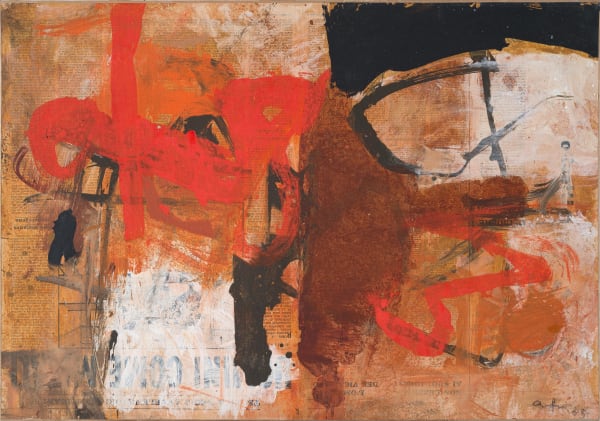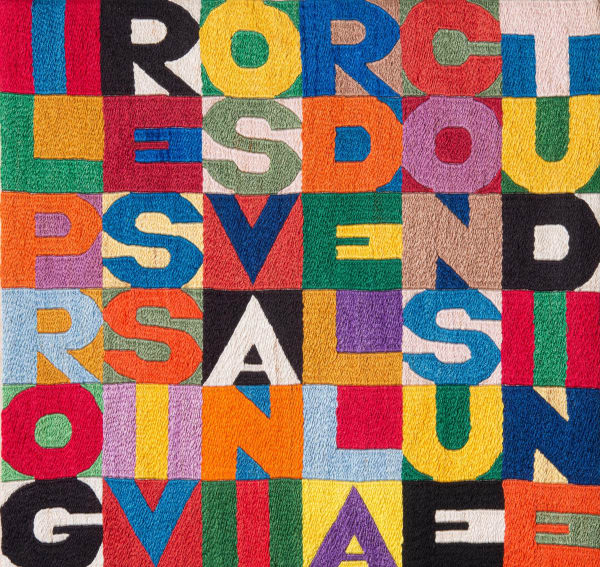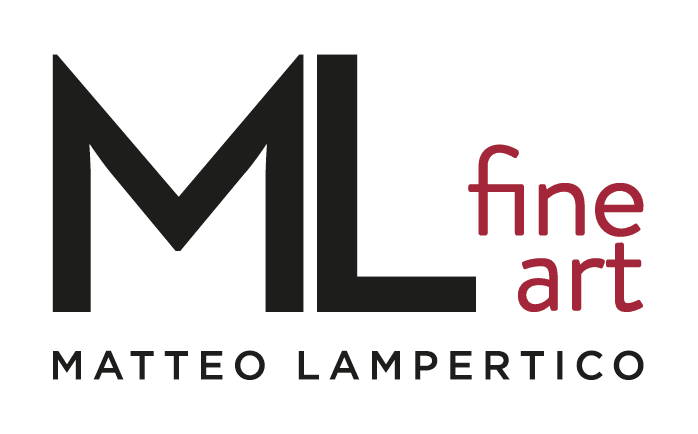Giorgio De Chirico Italian, 1888-1978
Giorgio de Chirico was an Italian artist who co-founded the genre of ‘metaphysical painting’ which had a profound influence on the Surrealists. Born in Rome, he developed a keen interest in art in childhood and was also moved by philosophical writings. As a young artist, he was enthused by the European Symbolist artists and their use of dream-like imagery. His earliest signature works combined a Symbolist sensibility with his love of the classical antiquities of ancient cities and his philosophical musings on the true nature of reality. He held many exhibitions of his work around the world and was much praised for his brilliant and intricate interpretations of everyday life which were expressed vividly through his paintings. He introduced the world to the style of metaphysical painting and his enigmatic scenes of empty cities, menacing statues, mysterious shadows and strange combinations of everyday objects inspired the artists of the Surrealist movement in the 1910s. However, the element of mystery in his paintings diminished after 1919, when he eventually began painting in a more realistic and academic style. Although his later works failed to recapture the unsettling originality of his early paintings, he is still recognized and praised for his influence on both, the Surrealists and the later generation of artists. His contribution to modern art of the 20th-century is invaluable
Born in the Greek port city of Volos, Giorgio de Chirico was the son of Italian parents. At the time of his birth, his father was managing the construction of a railroad in Greece. He sent his son to study drawing and painting at Athens Polytechnic beginning in 1900. There, he worked with the Greek artists Georgios Roilos and Georgios Jakobides. De Chirico also developed a lifelong interest in Greek mythology. His hometown of Volos was the port used by Jason and the Argonauts when they set sail to find the Golden Fleece.
After the death of his father in 1905, de Chirico's family moved to Germany. Giorgio entered the Academy of Fine Arts in Munich. He studied with the painters Gabriel von Hackl and Carl von Marr. Another early influence was symbolist painter Arnold Bocklin. Early works like "The Battle of Lapiths and Centaurs" used myths as primary source material.
Beginning in 1909 with "Enigma of an Autumn Afternoon," de Chirico's mature style emerged. It is a quiet, simplified scene of a town square. In this case, it is Florence, Italy's Piazza Santa Croce, where the artist claimed to have a moment of clarity where the world appeared as if for the first time. The nearly empty piazza includes a statue and the classical facade of a building. Some observers found the painting uncomfortable to view while others saw it as strangely comforting.
In 1910, de Chirico graduated from his studies in Munich and joined his family in Milan, Italy. He was there a short time before moving to Florence. He studied German philosophers, including Friedrich Nietzsche and Arthur Schopenhauer. They impacted the young artist's painting by encouraging his explorations of what lies beneath the ordinary, everyday view of life.Referring to his works as part of the "Metaphysical Town Square" series, de Chirico spent the next ten years developing his style of metaphysical painting. He attempted to infuse his interpretations of ordinary reality with the impact of mythology and moods like nostalgia and a sense of waiting. The result was paintings that were haunting and even disturbing.
In November 1919, de Chirico published an article titled "The Return of Craftsmanship" in the Italian magazine Valori plastici. He advocated a return to iconography and traditional methods of painting. He also became a critic of modern art. Inspired by the work of the old masters Raphael and Signorelli, de Chirico believed that the arts must return to a sense of order.
In 1924, de Chirico visited Paris, and, at the invitation of writer Andre Breton, he met with a group of young surrealist artists. They celebrated his work from the previous decade as pioneering efforts in surrealism. Consequently, they severely criticized his classically inspired work of the 1920s.
The uneasy alliance with the surrealists grew increasingly contentious. In 1926, they parted ways. De Chirico referred to them as "cretinous and hostile." Late in the decade, he expanded his work into stage design. He designed sets for Sergei Diaghilev, founder of the Ballet Russes.
From 1930 until the end of his life, de Chirico painted and produced new works for nearly 50 more years. He moved to the United States in 1936 and then returned to Rome in 1944, where he remained until his death. He bought a house near the Spanish Steps, which is now the Giorgio de Chirico House, a museum dedicated to his work.
De Chirico's later paintings never received the acclaim lavished on his metaphysical period efforts. He resented the rejection of his new works believing that his later explorations were more mature and superior to the celebrated paintings. In response, de Chirico began creating "self-forgeries," backdated copies of metaphysical works that he presented as new. He was interested both in the financial profit and thumbing his nose at critics who preferred the early works.
De Chirico was an extremely prolific artist into his 80s. In 1974, the French Academie des Beaux-Arts elected him as a member. He died in Rome on November 20, 1978.
-

Arte in Nuvola 2024
BOOTH B30 - C29 21 - 24 Nov 2024ML Fine Art is pleased to announce its participation to Arte in Nuvola 2024, that will take place in Rome from 21 to 24 November....Read more -

TEFAF Maastricht 2024
7 - 14 Mar 2024We are looking forward to seeing you at TEFAF Maastricht 2024! On this occasion our booth will showcase a selection of historically relevant paintings, sculptures...Read more -

Arte e Collezionismo, Rome
ML Fine Art is pleased to invite you to visit us at Arte e Collezionismo art fair in Rome. 29 Sep - 2 Oct 2023ML Fine Art looks forward to seeing you in Rome. On this occasion our booth will showcase a selection of historically relevant paintings, sculptures and...Read more -

MIART 2021
17 - 19 Sep 2021ML Fine Art is pleased to announce its participation to the 25th edition of Miart, Milan’s international modern and contemporary art fair, that will take...Read more


